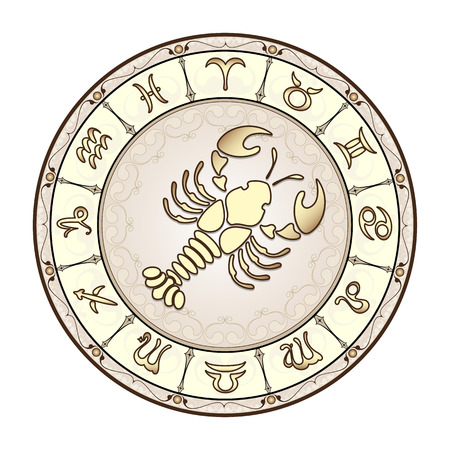Introduction to the Moon Goddess in British Paganism
The archetype of the Moon Goddess occupies a profound and enduring place within British Pagan traditions. As both a symbol of mystery and transformation, she has been revered through centuries of spiritual evolution, shaping the beliefs and practices that define contemporary Paganism in Britain today. From ancient times, when lunar cycles guided agricultural life and ritual observances, the Moon Goddess has served as a focal point for those seeking connection with nature’s rhythms. Over time, her presence has been woven into myth, folklore, and magical practice, carrying through eras of suppression and revival. The 20th-century resurgence of interest in Pagan spirituality — often referred to as the Pagan revival — brought renewed attention to her many faces, from the legendary Welsh enchantress Cerridwen to the more abstract figure known simply as “The Lady.” Understanding this goddess archetype is key to appreciating the spiritual landscape of British Paganism, where tradition blends with modern reinterpretation and personal devotion. In this context, the Moon Goddess emerges not only as a relic of the past but as a living symbol of feminine power, intuition, and cyclical change.
2. Cerridwen: The Welsh Enchantress and Keeper of the Cauldron
Cerridwen stands as one of the most enigmatic figures in British paganism, especially within the rich tapestry of Welsh mythology. Often depicted as an enchantress and wise woman, Cerridwen’s narrative is deeply interwoven with lunar symbolism and transformation. Her most famous myth centres around her cauldron, a vessel of poetic inspiration, rebirth, and profound wisdom. This mythological cauldron not only echoes themes found throughout Celtic lore but also represents the cycles of the moon—waxing, full, and waning—as metaphors for life, death, and renewal.
The Role of Cerridwen in Welsh Mythology
In the medieval Welsh text, the Mabinogion, Cerridwen is portrayed as both a mother and a powerful magician. She brews a potion for her son to grant him wisdom, but through a twist of fate, the transformative magic is bestowed upon another—Gwion Bach—who becomes the bard Taliesin after undergoing several shapeshifting trials. This story demonstrates Cerridwen’s deep associations with initiation, knowledge, and the transformative power often attributed to lunar goddesses.
Lunar Symbolism and Attributes
Cerridwen’s connection to the moon is reflected in her attributes as a goddess of inspiration and change. The cyclical nature of her cauldron mirrors the phases of the moon that so heavily influenced agricultural and spiritual practices in ancient Britain. The following table summarises Cerridwen’s key lunar associations:
| Aspect | Lunar Association | Pagan Practice |
|---|---|---|
| Cauldron | Symbolises waxing/waning cycles | Used in rituals for transformation and renewal |
| Wisdom & Inspiration | Linked to full moon (peak illumination) | Meditation or poetry on full moons |
| Transformation | Reflects new moon (rebirth) | Initiatory rites during dark/new moon phases |
Cerridwen in Contemporary British Pagan Practice
Modern practitioners in Britain often invoke Cerridwen during rituals focused on personal growth or creative pursuits. Her cauldron has become a central motif in Druidry and Wicca alike, symbolising the inner wellspring from which insight flows. The reverence for Cerridwen thus bridges ancient myth with present-day spirituality, demonstrating how her lunar legacy continues to inspire those seeking transformation under the British moonlit sky.

3. The Lady in Wicca and Modern Paganism
In the tapestry of British Pagan traditions, the figure of the Moon Goddess has undergone significant transformation, particularly within the context of Wicca and modern pagan practices. Here, she is most commonly referred to as The Lady, a title that encompasses her multifaceted nature and central role in contemporary spirituality. Tracing her evolution reveals both continuity with ancient lunar goddesses and a dynamic adaptation to new religious landscapes.
The Emergence of The Lady
The Lady emerges in twentieth-century Wiccan practice as the embodiment of all goddesses, yet she is especially associated with the moon’s cycles—waxing, full, and waning. This modern interpretation draws from earlier deities such as Cerridwen and Artemis but synthesises these influences into a singular, archetypal feminine presence. Within British Wicca, The Lady is not only revered for her lunar attributes but also for her association with birth, intuition, and mystery.
Relationship with the Horned God
A core element of Wiccan belief is the duality between The Lady and her counterpart, the Horned God. Together, they symbolise balance within nature—the perpetual dance between life and death, creation and destruction. Their relationship is celebrated through seasonal rituals marking the Wheel of the Year, where their mythic union and separation reflect agricultural and cosmic cycles familiar to many rural British traditions.
The Ladys Place in Contemporary Practice
In today’s British Pagan communities, The Lady occupies a position of honour at rituals, esbats (lunar ceremonies), and coven gatherings. She is invoked for guidance, healing, and empowerment, resonating with those seeking connection to both heritage and personal spirituality. Her presence bridges ancient reverence for the moon with evolving expressions of feminine divinity in Britain’s modern spiritual landscape.
4. Lunar Cycles and Rituals in British Practice
Within the framework of British Paganism, the phases of the moon are treated with deep reverence, reflecting both ancient custom and contemporary spiritual practice. The Moon Goddess, whether encountered as Cerridwen, The Lady, or another lunar aspect, is often central to these rituals. The cyclical nature of the moon—waxing, full, waning, and new—is considered a mirror for lifes rhythms and personal transformation. Esbats, which are gatherings or ceremonies held in honour of the moon (as distinct from Sabbats marking solar festivals), form a foundational part of British Pagan ritual life.
Esbats typically coincide with the full moon but may also be celebrated during other significant lunar phases. These ceremonies provide practitioners with opportunities for magical workings, divination, meditation, and connecting more deeply with the lunar deity. While practices can vary widely across different covens and solitary practitioners, certain elements remain consistent: creating sacred space, calling upon the quarters (directions), invoking the Moon Goddess, and engaging in communal or individual acts of devotion.
Lunar Phases & Ritual Focus
| Lunar Phase | Ritual Emphasis | Common Practices |
|---|---|---|
| New Moon | New beginnings, setting intentions | Journaling wishes, planting symbolic seeds |
| Waxing Moon | Growth, attraction | Charging tools, affirmations |
| Full Moon | Culmination, celebration | Group esbats, divination rites |
| Waning Moon | Banishment, release | Cleansing rituals, letting go exercises |
The Role of The Lady in Modern British Rituals
The Lady—a title often used for the Moon Goddess in Wiccan and broader Pagan circles—serves as a symbol of feminine power, mystery, and transformation. During full moon rites, practitioners might recite invocations or poems dedicated to her presence. Offerings such as cakes and wine (or their non-alcoholic equivalents) are shared among participants as acts of gratitude and communion. Many covens choose to meet outdoors when possible, drawing on the natural energies present under the British night sky.
Traditional Ceremonies and Contemporary Adaptations
Although many customs draw inspiration from historical sources—such as folklore surrounding Cerridwen or records of pre-Christian lunar worship—modern Pagans frequently adapt their rituals to suit personal belief or local tradition. For instance, some groups incorporate music or dance; others focus on quiet reflection or spellwork tailored to current needs. Regardless of formality or structure, the consistent thread remains: an honouring of the moon’s cycle as an expression of divine femininity within British Pagan spirituality.
5. Local Landscapes and Folklore: The Moon Goddess in British Myth
The mythos of the Moon Goddess within British Pagan traditions is deeply intertwined with the unique landscapes and rich local folklore of the British Isles. The rolling hills, ancient woodlands, misty moors, and sacred springs of Britain have long been considered liminal spaces—places where the veil between the mundane and the magical grows thin. These environments have inspired countless tales and beliefs about lunar deities, shaping both their character and their perceived powers.
Many local legends speak of moonlit nights when spirits or goddesses are said to wander the countryside. For example, in Wales, lakes such as Llyn y Fan Fach are associated with mysterious Ladies of the Lake, often connected to lunar symbolism and feminine power. These stories not only reflect the landscape but also reinforce the connection between water, moonlight, and divine femininity—a recurring motif throughout British Paganism.
Across England’s chalk downs and ancient stone circles, such as Stonehenge and Avebury, archaeological evidence suggests that lunar alignments were significant in ritual practice. Folklore surrounding these sites often speaks of nocturnal rites conducted under the full moon, inviting the blessings of “The Lady” or other goddess figures. The natural features themselves—standing stones, groves, barrows—become sacred through their association with lunar cycles and goddess worship.
Scotland’s rugged Highlands are home to tales of Cailleach Bheur, a crone goddess linked to winter and the waning moon. Her presence in local stories demonstrates how regional terrain influences myth-making; mountains shrouded in mist become her domain, embodying both awe and respect for nature’s untamed forces. Here, the Moon Goddess is not just a gentle nurturer but a powerful shaper of seasons and fate.
Even today, modern Pagans in Britain often reference local folklore when honouring the Moon Goddess. Seasonal festivals like Imbolc or Beltane may incorporate traditional songs or dances from specific regions, blending historical myth with contemporary spiritual practice. Through this ongoing relationship between place and story, the British landscape continues to inform and inspire devotion to lunar goddesses—from Cerridwen’s Welsh cauldron to the enigmatic Lady who watches over all beneath the silver light.
6. Symbols, Offerings, and Sacred Sites
Within British Pagan traditions, the Moon Goddess is honoured through a rich tapestry of symbols, offerings, and sacred spaces that have evolved over centuries. Each element plays a crucial role in connecting practitioners with the divine feminine and lunar energies that permeate these islands.
Key Symbols of the Moon Goddess
The crescent moon is perhaps the most universally recognised symbol associated with the Moon Goddess in Britain. Often depicted cradling or crowning goddesses such as Cerridwen or The Lady, it represents cyclical renewal and hidden wisdom. Silver, both as a colour and a metal, is also highly significant—mirroring the moon’s ethereal glow and its mystical influence on water and tides. Other recurring motifs include hares (linked to lunar cycles), cauldrons (particularly with Cerridwen), and water vessels, all pointing to themes of transformation, intuition, and fertility.
Customary Offerings
Offerings to the Moon Goddess tend to reflect her association with nurturing, intuition, and the natural world. Milk, honey, white flowers (such as hawthorn or moon daisies), and silver coins are traditional gifts left at shrines or during esbat rituals. In some regions, practitioners leave bread or cake shaped like crescent moons as a nod to ancient harvest customs. Water—especially from sacred springs or wells—is frequently poured out as a libation in her honour, acknowledging her connection to life-giving forces and purification.
Notable British Sacred Sites
Across Britain, several sites hold longstanding connections to lunar worship. The standing stones at Avebury and Stonehenge are widely believed to align with celestial events including full moons, serving as gathering points for ritual observance. The Rollright Stones in Oxfordshire are another locus for moon rites, with folklore linking them to witches’ sabbats under the light of the full moon. In Wales, lakes such as Llyn Tegid are traditionally associated with Cerridwen herself; offerings are sometimes cast into these waters even today. Wells dedicated to “Our Lady” or local equivalents often blend Christian and pre-Christian reverence for the feminine divine—remnants of older goddess veneration embedded in rural landscapes.
Living Traditions
For contemporary British Pagans, these symbols, offerings, and sacred places are not just historical artefacts but living components of spiritual practice. Whether gathering at ancient megaliths on a moonlit night or making simple home altars adorned with silver and white blooms, the enduring presence of the Moon Goddess continues to inspire ritual creativity and personal devotion throughout Britain.
7. Contemporary Relevance and Personal Devotion
In present-day Britain, the Moon Goddess continues to hold a place of deep significance within the spiritual landscape of modern paganism. While traditions may have their roots in ancient myth and folklore, contemporary practitioners often blend historical reverence with personal interpretation, creating a living spiritual practice that is both meaningful and adaptable.
For many British pagans today, the Moon Goddess represents not only the cyclical rhythms of nature but also the intimate patterns of daily life—transformation, intuition, and renewal. Devotees may honour her through solitary rituals performed under the full moon, meditative walks in woodland glades, or by crafting offerings such as cakes and mead inspired by old customs. The act of observing lunar phases remains central: the waxing, full, and waning moons each provide distinct opportunities for intention-setting, gratitude, and release.
Community observances are equally vital. In covens and open circles across the UK, gatherings on Esbats (moon rituals) bring together individuals to celebrate the Lady in her various forms—sometimes as Cerridwen stirring her cauldron of inspiration, sometimes as an unnamed embodiment of feminine power. These rituals foster a sense of connection not only to deity but to fellow practitioners and to the land itself.
The Moon Goddess’s influence extends beyond ritual space into everyday life. Many pagans incorporate small acts of devotion into their routines: lighting candles at moonrise, journaling dreams during certain phases, or weaving lunar symbolism into art and poetry. There is also a growing movement towards environmental stewardship among British pagans, viewing care for nature as an act of devotion to the goddess who governs its cycles.
Personal relationships with the Moon Goddess are diverse; she may be approached as an external divinity, a guiding archetype within the psyche, or both. This flexibility allows her presence to remain relevant in a rapidly changing society—offering comfort during uncertainty, inspiration for creativity, and a sense of rootedness in tradition.
Ultimately, whether through communal ceremony or quiet contemplation beneath a cloudy British sky, the Moon Goddess endures as a beacon for those seeking connection with nature’s mysteries. Her story continues to evolve alongside her devotees, reflecting both ancient wisdom and modern experience within British pagan traditions.


